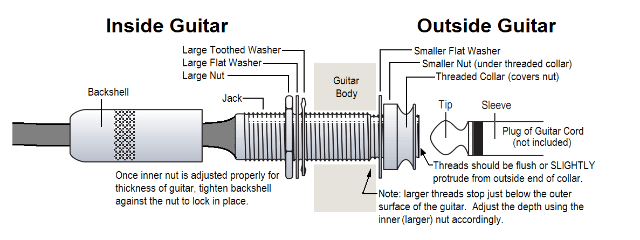So you ride yourselves over the fields
and you make all your animal deals
and your wise men don't know how it feels
to be thick as a brick.
and you make all your animal deals
and your wise men don't know how it feels
to be thick as a brick.
As an art student at SUNY Binghamton during the early 1980s, I had the privilege of studying sculpture with Prof. Ed Wilson. Wilson was well versed in many materials, including wood. One lesson in particular I learned in that class may as well have been taught in an engineering or architectural design curriculum. Part of the creative process of art is figuring out how to execute the piece. So, a working knowledge of the medium is something an artist needs in order to be able to execute a vision. In this way, this neck block is as much about how to construct and attach the layers of wood, and then attach the rest of the body and the neck to the neck block, as it is about how the assembled functions when the body is attached to the neck. Time will if it was wise to make such a large neck block for this build. With the top and bottom panels, this Flat Top Tele build certainly will be as thick as a brick.
Before gluing the five layers to each other, I roughed out the neck pocket cutout in the top layer, and bored out the holes in the other layers for the neck bolts. Since the body is so thick, I'm using 3-1/2-inches long, #10-32 machine bolts. A set of #10-32 threaded brass inserts in the neck heel will receive the bolts.
When I first thought about how to glue-up the neck block,I figured I'd glue them all at the same time. When it came time, I realized it would be easier to control the alignment of the layers and removal of squeeze-out glue by attaching just two layers at a time. To help keep the layers aligned, I made a clamping jig from some scrap wood. Since I had already made the rough neck pocket cutout from the top layer, it did not have neck bolt holes to help with the alignment. So, I clamped directly against the outer surfaces of the layers to align them against the jig, and added bar quick-clamps to hold the layers flat against each other and the jig.
After the glue had dried and clearing off some excess glue, I moved on to adding the third layer. Since I could now use the neck bolts for alignment, I trimmed the size of the jig, making it possible to use more clamps to hold the layers flat against each other and the jig. Here's a picture of one of the layers with glue on it just before clamping.
The rest of the layers glued up without any surprises.
All ready for some work with some files and sand paper, I stopped work on the neck block assembly a few days ago, taking a break from an early summer 2014 heatwave that was gripping the east coast. This was the perfect time to get caught up on some things in air-conditioned comfort, such as accounting at These Old Guitars, and creating a company website with my long-time guitar-playing friend and website designer. It was also a good time to put a little more thought into some of the processes I would use for the bent wood portions of this old hollow Tele body, as well as final design of her internal bracing and some forms for assembling her body. There was also some more electrical control design work to be done with the help of long-time guitar-playing friend and electrical engineer on that LeSpork Bass project...






















































